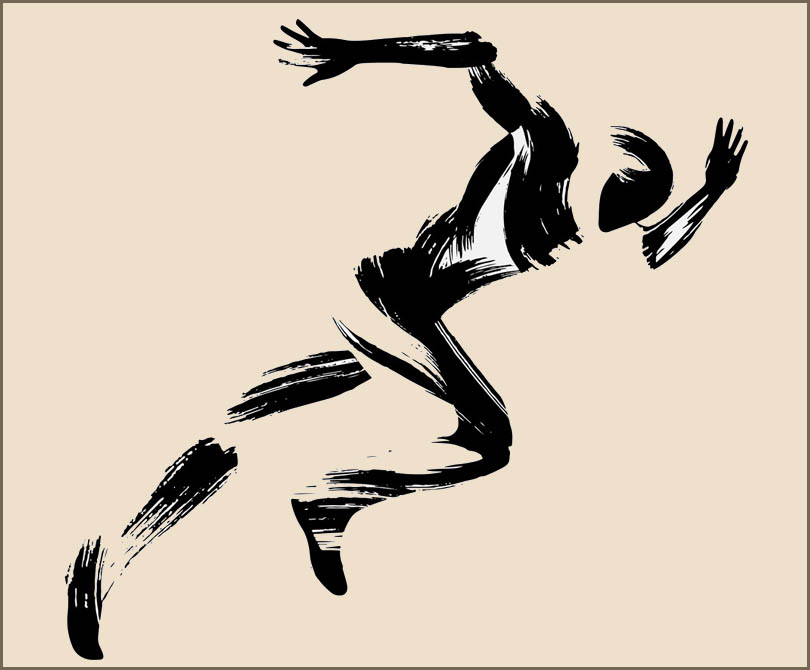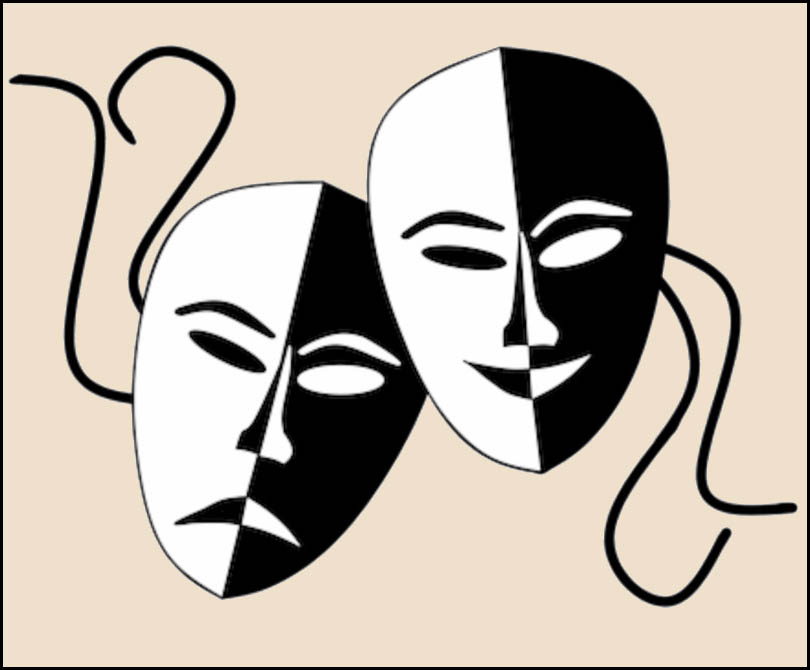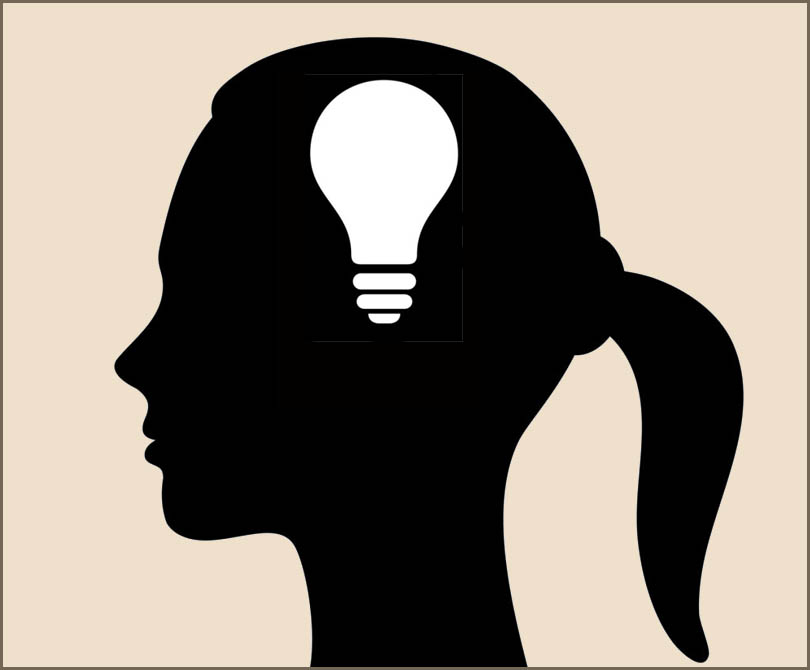Centers of the Spirit
Ratio, Emotion, Movement, and Instinct
In the philosophy of the Fourth Way introduced to Western Europe by P.D. Ouspensky in the early last century, the human mind operates using four spiritual Centers. Often this is called a psychological classification, but it’s much more than that. These four Centers exist in many living creatures in the fauna of our world, not just in humans. How these four Centers operate in animal beings varies by species. Here’s an explanation of the four Centers in humans, starting with the Instinct Center.
Instinct Center
People often refer to our reptilian brain, but it’s more appropriate to speak of our Instinct Center. This Center controls all our autonomous bodily processes, and most of the semi-autonomous processes. Autonomous processes are all body functions over which our conscious mind has no control, such as: heartbeat, perspiration, digestion, etc. We don’t need to pay attention to these functions for them to continue, nor can we genuinely, i.e., long-term, influence them (and this only after intensive training). The functioning of our Instinct Center is entirely determined by our individualized essence with which we were born. On the semi-autonomous processes, we do have some influence. For instance, we can hold our breath or stop blinking for a while. But this isn’t wise unless done intentionally. Sex and sexual attraction also belong to this Center, and while we have some influence over them, they essentially ‘happen’ to us.
The Instinct Center in humans (besides the autonomous bodily processes) is responsible for ‘instinctive reactions’, often described as the old ‘reptilian brain’ responding to external circumstances, like the well-known ‘fight, flee, and freeze’ reactions. But there are more instinctive processes at play, especially when a person lives in very primitive conditions, or in significant unconsciousness.
In humans and animals, the functioning of the Instinct Center is predetermined. Since this Center operates autonomously in us, it’s not meaningful to engage with it when aiming for our inner freedom. (Our intuition does not belong to this Center, contrary to common belief). But, for example, since sex is largely determined by this Center, it could be addressed later. For now, we’ll study our other three Centers, as rapid development is possible if we truly commit.
The Movement Center
Every movement of our body is generated in our center of motor skills, the Movement Center. In animals, the Movement Center is closely linked to the Instinct Center. We recognize various types of movement: physical movement and mental movement. All our muscles activate through our Movement Center, enabling us to act according to our surroundings. This Movement Center can be trained. Every kind of motor skill can be improved and refined, making us capable of great achievements. For instance, we can learn to play musical instruments, learn soccer or other sports, or professionalize any action.
Whether our Movement Center functions well and is trainable depends on the capabilities and limitations in our individualized essence. We have innate movement abilities that we can utilize, but if we don’t have them, it becomes challenging to realize them. Our physical state largely determines our movement possibilities and their refinement. One person, for example, can learn complex drumming using all four limbs simultaneously, while another cannot, no matter how hard they try. Our motor talents and limitations, therefore, express themselves in our Movement Center.
Primarily, our Movement Center is always active, through our body, but also in our mind. There’s often much mental movement, and it’s usually not beneficial. In this, we recognize the Movement Center’s improper function. It asserts itself and intervenes – always mechanically – in the thinking of our Reason Center, fueling our ‘waking sleep’. It’s crucial to recognize and stop the Movement Center’s improper function. Any moment of awakening is suitable for this.
The Emotion Center
Our Emotion Center is ‘layered’. The first ‘layer’ of the Emotion Center’s functions is that of physical feeling. Both our sense of touch (the skin) and the feeling inside our body are enabled by our Emotion Center. Our tactile capabilities and our sense of pain or discomfort, etc., are made possible by our Emotion Center.
The second layer of the Emotion Center’s functions is that of emotional feeling. Here, a wide spectrum of feelings can be observed: from pain, sorrow, and anger to well-being, laughter, and love. Hence, this center is also called our emotional center. It’s the center of our emotions and feelings, but also of many sentimental capabilities that animals lack, such as the ability of dedication to what we do. This last operation of our Emotion Center is very important in the process of inner development and liberation.
The Emotion Center is important in human development, just like in animals. Much can be ‘sensed’ about what’s good for inner development, but many feelings, especially the negatively perceived ones, obstruct inner development. It’s essential to observe this within ourselves and distinguish between the Emotion Center’s correct functioning, which aids us, and the incorrect functioning that hinders us.
We’re also familiar with the expression ‘doing something with a lot of feeling’. Here, our Emotion Center serves an action from the Movement Center. In a certain sense, our feeling can guide our action, making the action ‘more sensitive’ and preventing excessive fatigue.
Our Emotion Center is also almost always active, often as emotional shading in our mind. This shading can have a grounded reason, but it can also arise from various thought streams and conditionings. On one hand, our feeling offers us, as the ‘language of our soul’, essential information: about the situation we’re in and how our inner state is and what we need to recognize. On the other hand, our Emotion Center can produce various undirected sub-feelings that make us feel ‘trapped’ and lead us to act identified, inadequately, or whimsically. In this, we recognize the incorrect functioning of this Emotion Center. It asserts itself and intervenes – again, mechanically – in our thinking and acting, fueling our ‘waking sleep’. It’s crucial to recognize and stop the incorrect functioning of the Emotion Center. Every moment of awakening is suitable for this.
The Rational Center
Now we come to the Rational Center, which primarily emerged in evolutionarily advanced life forms. Our Ratio, or our Intellect, has developed to the extent that we can even follow vast abstract concepts. For instance, it allows us to perform thought experiments. The act of thinking itself (Manas) is the most recognizable function of our Rational Center, as is categorizing, analyzing, and interpreting complex matters. In animals, it’s different since they don’t have a rational mind.
Our Rational Center brought humanity to its ability for self-reflection. We have a self-reflective mind, which is more or less developed. Our Thought Center is almost always active, sometimes functionally, but mostly recognizable as reflections or circling thoughts that pull us out of the Now. It offers us the ability to remain outside of the Now with our minds (to a past that has passed or an imagined future), thanks to our acquired ‘free will’.
Since our Rational Center plays such a vital role in human life, its operation is also highly influenced by external conditions such as upbringing, education, and conditioning. What’s remarkable is that the Rational Center can recognize these acquired conditions as meaningful or meaningless. We can always ask ourselves: is our thinking functional and beneficial, or mechanical and tiring? Is it new and original or old and conditioned? Is it serving our inner development or acting as an obstacle? Does it bring us something valuable in the Now, or does it pull us out of the Now?
Just as feelings can drive thought streams, our thought streams can generate various sub-feelings, trapping our thinking further in repetitive patterns that make us act inadequately or whimsically. Herein, we recognize the incorrect functioning of the Rational Center. It asserts itself and intervenes – also mechanically – in our feelings and actions, causing unwarranted ‘sub-feelings’ to arise and non-adequate movements, and fueling our ‘waking sleep’. Recognizing and stopping the incorrect functioning of the Rational Center is crucial. Every moment of awakening is an opportunity.
What are we to do?
 The Fourth Way as an inner liberation path consists of purifying and developing three Centers: that of Ratio, Emotion, and Movement. We refer to this here as the path of Head, Heart, and Hands. Our perception and our renewed appreciation for what takes place in these three Centers are the beginnings of our inner work. We will be able to purify these Centers and stimulate and deepen their operation. The Centers have, as you can read above, the tendency to take over each other’s tasks. This causes everything to increasingly go wrong in our mind. These very intelligent Centers simply need to do their own work and not interfere with the operations of other Centers. We can stop the impure operations of the Centers because we see that this obstructs our inner liberation and self-realization in self-expression. Studying and understanding the pure operation of these Centers ensures that we can fully utilize our talents, which come to expression thanks to the pure operation of these three Centers!
The Fourth Way as an inner liberation path consists of purifying and developing three Centers: that of Ratio, Emotion, and Movement. We refer to this here as the path of Head, Heart, and Hands. Our perception and our renewed appreciation for what takes place in these three Centers are the beginnings of our inner work. We will be able to purify these Centers and stimulate and deepen their operation. The Centers have, as you can read above, the tendency to take over each other’s tasks. This causes everything to increasingly go wrong in our mind. These very intelligent Centers simply need to do their own work and not interfere with the operations of other Centers. We can stop the impure operations of the Centers because we see that this obstructs our inner liberation and self-realization in self-expression. Studying and understanding the pure operation of these Centers ensures that we can fully utilize our talents, which come to expression thanks to the pure operation of these three Centers!
The pure operation of these Centers is entirely in service to our Organs of the Mind.
The Fourth Way in Three Lines
- The Rational Center purifies, in addition to purifying the Emotion and Movement Center, its own incorrect operation (for instance, needless theorizing and circling thoughts).
- The Emotion Center purifies, in addition to purifying the Reason and Movement Center, its own incorrect operation (for instance, negative feelings and reactions to circling thoughts).
- The Movement Center purifies, apart from its own unnecessary or restless muscle movements, also the movements in the other Centers that result in energy loss (such as by a grinding mind with circling thoughts, originating from emotional movements, which further drive the unrestrained thoughts).
The layers of the Centers of the Spirit
Each Center is also divided into three layers. Each Center has a mechanical part, an emotional part, and an intellectual part. The degree of alertness of the Observer within us, the purity of our Discernment, and the ‘accessibility’ of our Conscience together determine to what extent these layers within the Centers can be self-reflectively observed and understood. As our Centers become purer, the emotional and intellectual parts become increasingly influential in shaping the quality and refinement of our thinking, speaking, and acting. The mechanical parts of our three influenceable Centers are thus upgraded. However, in the mechanical part of our Emotion-Center resides our wake-up call, which instantly brings us from a state of waking sleep into the present moment. And in the mechanical part of our Rational Center, it can subsequently keep us in the present moment, fueled by our Magnetic Center, which becomes stronger and more determinant as the emotional and intellectual parts are understood.
